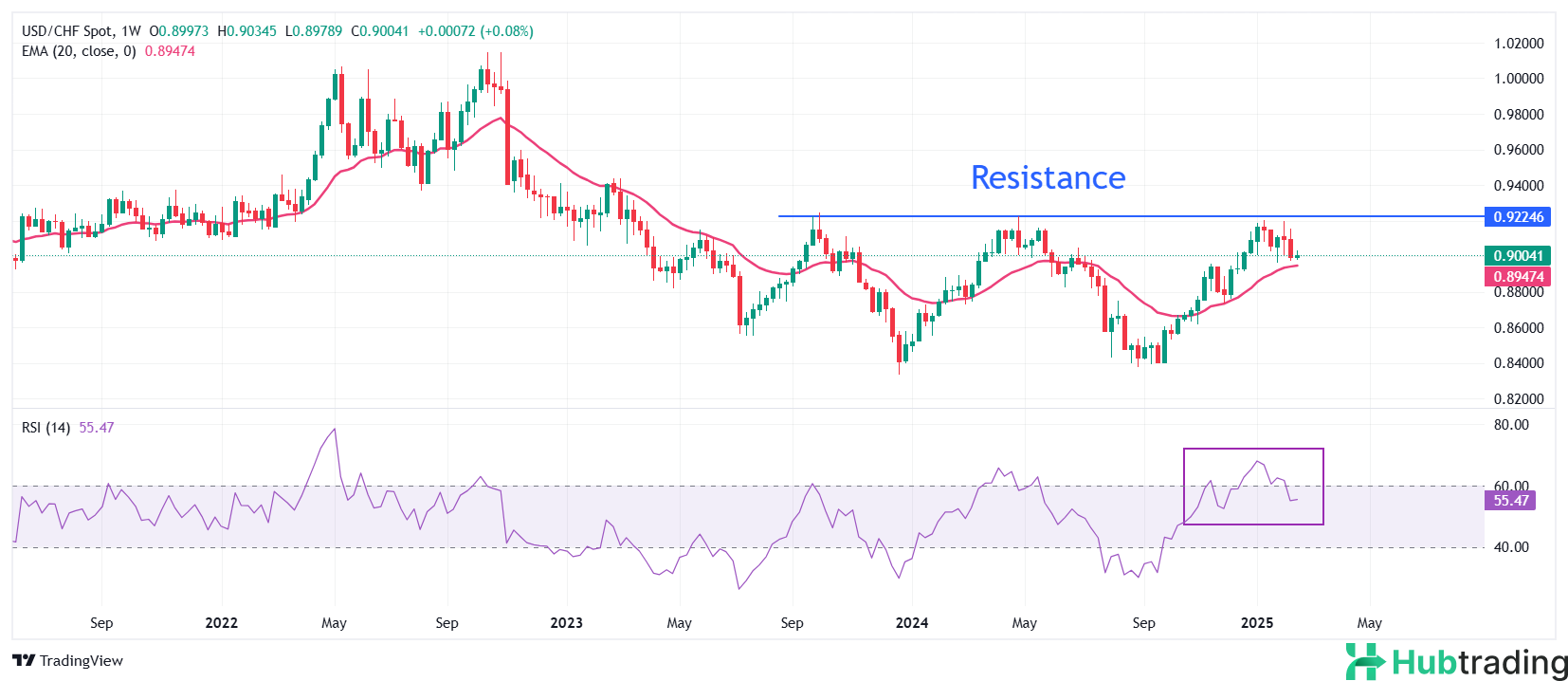- USD/CHF retreats from intraday highs, dropping back to near 0.9000 as the US Dollar struggles to maintain its recovery.
- Federal Reserve officials believe current monetary policy is appropriately positioned.
- The Swiss National Bank (SNB) may consider negative interest rates to mitigate the risk of persistently low inflation.
The USD/CHF pair retreats from its intraday highs, falling back near the key psychological level of 0.9000 during European trading hours on Tuesday. The Swiss Franc pair loses earlier gains as the US Dollar (USD) corrects slightly but retains some of its strength. The US Dollar Index (DXY), which measures the Greenback’s value against a basket of six major currencies, struggles to stay above the crucial 107.00 mark.
Earlier in the session, the USD Index rebounded on solid expectations that the Federal Reserve (Fed) will keep interest rates steady in the range of 4.25%-4.50% for an extended period. On Monday, several Fed officials indicated that there is no immediate need for policy changes, citing resilient US economic growth, persistent inflation, and a balanced labor market.
However, the US Dollar's upward momentum has been tempered by reduced concerns over the potential imposition of reciprocal tariffs by US President Donald Trump. Trump recently stated that his team is working on a reciprocal tariff plan, although market participants were initially anticipating a more immediate announcement.
Meanwhile, the Swiss Franc (CHF) remains under pressure, following softer-than-expected Consumer Price Index (CPI) data for January, which fueled expectations that the Swiss National Bank (SNB) might move to negative interest rates. Swiss CPI year-on-year decelerated to 0.4% from 0.6% in December, below the SNB’s target range of 0%-2%.
The USD/CHF pair struggles to revisit its 15-month high around 0.9200, though the outlook remains constructive. The 20-week Exponential Moving Average (EMA) near 0.8947 continues to slope upwards, suggesting continued support for the pair.
The 14-week Relative Strength Index (RSI) has fallen from the bullish range of 60.00-80.00 to the neutral 40.00-60.00 zone, signaling a slowdown in upward momentum, although the bias remains tilted to the upside.
For the pair to extend its move towards the 0.9300 resistance level and the March 2023 high of 0.9342, it must decisively break above the October 2023 high of 0.9244.
On the downside, if USD/CHF falls below the key support of 0.9000, it could decline toward the November 22 high of 0.8958, followed by the December 16 low at 0.8900.
USD/CHF weekly chart






